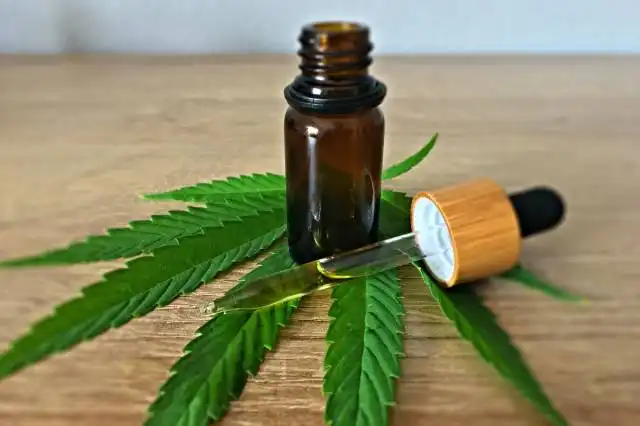Start a Beard Product Business
Turning Facial Hair Pride into Profitable Business
| Updated


BEARD PRODUCT BUSINESS
Unleash your inner hipster by venturing into a Beard Product Business, where your love for facial hair meets commerce. This business is all about developing, producing, and selling products like balms, oils, waxes, and grooming tools specially curated for men who consider their beard a pride. And who knows? With your unique beard products, thousands of men might just become as passionate about their facial hair as you are, transforming their scraggly beards into well-kept works of art.
Jump to Business Plan
RELATED BUSINESS IDEAS
Browse ALL Health & Beauty Innovations Business Ideas
Discover Your Perfect Domain
Unlock the door to your online success with our hand-picked selection of premium domain names. Whether you're starting a new venture or rebranding an existing one, the right domain can set the tone for your digital presence. Browse through our curated list, each with its unique potential to enhance your brand's visibility and credibility.
BEARD PRODUCT MINI BUSINESS PLAN
This a quick reality check to help you identify the strengths and weaknesses of your business concept before you dive in.
Beard Product Business
Expected Percent Margin:
- Gross Margin: 60-80%
- Net Profit Margin: 20-30%
Earnings Expectations:
- Daily Earnings: $100 - $300
- Weekly Earnings: $700 - $2,100
- Monthly Earnings: $3,000 - $9,000
- Annual Earnings: $36,000 - $108,000
Actions to Hit Those Numbers:
Product Development and Inventory Management:
- Initial Investment: At least $10,000-$20,000 for quality inventory, packaging and branding.
- Supplier Network: Establish relationships with at least 3-5 reliable suppliers for raw materials.
Marketing and Customer Acquisition:
- Website and Social Media: Regularly post educational beard grooming tips and user-generated content featuring your products.
- Influencer Marketing: Partner with lifestyle influencers and barbers to increase your products' visibility.
Sales and Customer Experience:
- E-Commerce Site: Set up an optimized online store or partner with established platforms like Amazon or Etsy.
- Customer Feedback: Regularly improve your product line based on customer feedback and reviews.
Cost Control:
- Production Costs: Streamline your production process to control costs, without compromising on product quality.
- Shipping: Provide free shipping for a minimum order value to attract more buyers while keeping your costs in check.
Business Operations:
- Launch New Products: Regularly introduce new products or limited edition versions to attract new customers and maintain existing ones.
- Volume of Sales: Aim for at least 10-20 sales per day at an average product price of $15-$30.
These are generalized estimations and can vary significantly depending on location, economic conditions, and individual business strategies. Always consult with a financial advisor for personalized advice.
NOT WHAT YOU HAD IN MIND? Here are more ideas



Browse ALL Health & Beauty Innovations Business Ideas
Grab Your Business Website Name
Before you get caught up in the whirlwind of setting up your business, invest in a domain name. It's a small but significant step that lays the foundation for your brand and makes it easier for customers to find and trust you. Just like you wouldn't build a house without securing the land first, don't build a business without securing your domain name.
"Why? Can't that wait?" Here's why it shouldn't
Step 1: Determine if the Business is Right for You
When starting a business, it is important to first determine if the business is right for you. This includes understanding the startup and ongoing expenses, as well as the potential ways to make money.
Breakdown of startup expenses
When starting a business, there are many expenses to consider. These may include the cost of materials, equipment, and supplies, as well as any legal fees associated with setting up the business. Additionally, you may need to invest in marketing and advertising to get the word out about your business.
Breakdown of ongoing expenses
Once the business is up and running, there are also ongoing expenses to consider. These may include the cost of materials, equipment, and supplies, as well as any fees associated with maintaining the business. Additionally, you may need to invest in marketing and advertising to keep customers informed about your business.
Examples of ways to make money
When starting a beard product business, there are many ways to make money. These may include selling products directly to customers, selling products through retailers, or offering services such as beard trimming or styling. Additionally, you may be able to make money through affiliate programs or by offering subscription services.
Step 2: Name the Business
Tips on how to name the business
When starting a business, it is important to choose a name that reflects the values and mission of the business.
Tips on how to name the business
When choosing a name for your business, it is important to consider how the name will be perceived by potential customers. It should be easy to pronounce and spell, and should be memorable and unique. Additionally, it should be reflective of the values and mission of the business. It is also important to research the name to make sure it is not already in use. Once you have chosen a name, you should register it with the appropriate state or local government agency.
Step 2: Name the Business
Tips on how to choose a name
When deciding on a name for a business, it is important to consider the message the name conveys. A good business name should be memorable, easy to pronounce, and easy to spell. Additionally, it should be relevant to the product or service being offered. It is also important to make sure the name is not already taken by another business. Research should be done to ensure the name is not already trademarked or copyrighted.
Examples of successful business names
Some examples of successful business names include The Beard Grooming Company, The Bearded Man Company, and The Gentleman's Grooming Company. These names are all memorable, easy to pronounce, and relevant to the product being offered. Additionally, they are all unique and not already taken by another business. It is important to note that the name should not be too long or complicated, as this could make it difficult for customers to remember.
Step 3: Create a Business Plan
Outline of the Business Plan
Creating a business plan is an important step in starting a beard product business. It should include a description of the business, a market analysis, a competitive analysis, a marketing plan, an operational plan, and a financial plan. The business plan should also include a timeline for when each step of the business plan should be completed.
Components of the Business Plan
The business plan should include a description of the business, including the products and services offered, the target market, and the mission and vision of the business. The market analysis should include an analysis of the current market, potential customers, and potential competitors. The competitive analysis should include an analysis of the competitors and their strengths and weaknesses. The marketing plan should include a description of the marketing strategies and tactics to be used to reach the target market. The operational plan should include a description of the operations of the business, such as the production process, the distribution process, and the customer service process. The financial plan should include a description of the startup costs, ongoing expenses, and potential sources of revenue.
Step 4: Register the Business
Requirements for registering the business
Depending on the type of business, there may be different requirements for registering the business. For example, if the business is a sole proprietorship, the owner will need to register the business with the state or local government. If the business is an LLC, the owner will need to file articles of organization with the state. Additionally, the business may need to obtain a federal tax ID number, register for state and local taxes, and obtain any necessary licenses or permits.
Options for registering the business
There are several options for registering the business. The owner can register the business online, in person, or through the mail. Additionally, the owner may need to hire a lawyer or accountant to help with the registration process. The owner should research the different options and determine which one is best for their business.
Once the business is registered, the owner will need to obtain any necessary licenses or permits. This may include a business license, a sales tax permit, or a food service license. Additionally, the owner may need to obtain a federal tax ID number and register for state and local taxes. The owner should research the requirements for their specific business and make sure they have all the necessary documents.
Step 5: Obtain Licenses and Permits
Requirements for obtaining licenses and permits
Before you can start a beard product business, you must obtain the necessary licenses and permits. Depending on the type of business you are running, you may need to obtain a business license, a health permit, a food license, and/or a tax permit. Additionally, you may need to register with your local government and/or the state government. It is important to research the specific requirements for your area and to contact the appropriate agencies to ensure that you are in compliance with all applicable laws and regulations.
Examples of licenses and permits
Business licenses are typically required for any business that sells goods or services. Health permits are typically required for businesses that sell food, beverages, or other consumable products. Food licenses are required for businesses that manufacture, process, or distribute food products. Tax permits are required for businesses that collect and remit sales tax. Additionally, you may need to register with the state government if you are selling products or services in multiple states. It is important to research the specific requirements for your area and to contact the appropriate agencies to ensure that you are in compliance with all applicable laws and regulations.
Step 6: Set Up a Business Bank Account
Benefits of having a business bank account
Setting up a business bank account is an important step in starting a beard product business. It allows you to separate your business finances from your personal finances, which is important for tax and legal purposes. It also allows you to easily track your business expenses, income, and profits. Additionally, having a business bank account can help you build credit for your business, which can be beneficial when it comes to securing financing.
Tips on setting up a business bank account
When setting up a business bank account, it is important to shop around for the best option. Compare fees, interest rates, and other features to find the best account for your business. Additionally, you will need to provide documents such as your business license, tax ID number, and other information. Make sure to read the terms and conditions of the account before signing up. It is also important to choose a bank that offers online banking and mobile banking services, as this will make it easier to manage your finances. Finally, make sure to keep your business bank account information secure and confidential.
Step 7: Source Suppliers
When starting a beard product business, it is important to source reliable suppliers. It is important to find suppliers that are able to provide quality products at a reasonable cost. It is also important to find suppliers that have a good reputation and are able to provide customer service and support.
Tips on sourcing suppliers
When sourcing suppliers, it is important to research the company and its products. It is also important to compare prices and services between different suppliers. It is also important to read reviews and feedback from customers to ensure that the supplier is reliable and trustworthy. Additionally, it is important to ask questions and ensure that the supplier is able to meet the needs of the business.
Examples of suppliers
When sourcing suppliers, there are a variety of options available. Examples of suppliers include wholesalers, manufacturers, and distributors. Wholesalers are companies that buy large quantities of products from manufacturers and then resell them to retailers. Manufacturers are companies that produce the products themselves. Distributors are companies that buy products from manufacturers and then resell them to retailers.
Step 8: Market the Business
Tips on marketing the business
When it comes to marketing your beard product business, it is important to have a comprehensive plan. Start by creating a website and social media accounts to promote your products. Utilize SEO techniques to ensure that your website is easily found by potential customers. Additionally, consider creating a blog to share helpful tips and tricks related to beard care. Finally, consider using influencer marketing to reach a larger audience.
Examples of successful marketing strategies
A great example of successful marketing for a beard product business is using influencers. Influencers are people who have a large following on social media and are willing to promote products to their followers. This type of marketing can be extremely effective in reaching a large audience. Additionally, consider using email marketing to reach potential customers. Email marketing allows you to send personalized messages to customers, which can be an effective way to increase sales. Finally, consider using traditional methods of advertising such as print, radio, and television. These methods can be effective in reaching a wide audience.
Step 9: Monitor and Evaluate
Tips on monitoring and evaluating the business - Monitoring and evaluating the success of a business is essential to its success. It is important to keep track of customer feedback, sales, and other metrics to ensure that the business is on the right track. It is also important to track the progress of the business over time to ensure that it is meeting its goals. Additionally, it is important to track the performance of the products and services offered by the business to ensure that they are meeting customer needs and expectations.
Examples of metrics to track - Some of the metrics that should be tracked when monitoring and evaluating a business include customer satisfaction, sales, profits, customer retention, and customer acquisition. Additionally, it is important to track the performance of the products and services offered by the business. This includes tracking the number of customers who purchase the products or services, the average order size, and the average customer lifetime value. Additionally, it is important to track the performance of marketing campaigns and other promotional activities. Finally, it is important to track the performance of the business’s website and other digital channels to ensure that they are providing a positive customer experience.
EXPLORE MORE CATEGORIES
Browse ALL Business Idea Categories
TAKE THE NEXT STEPS










